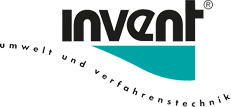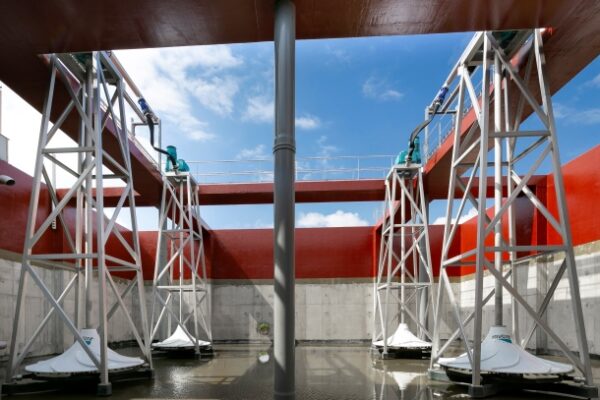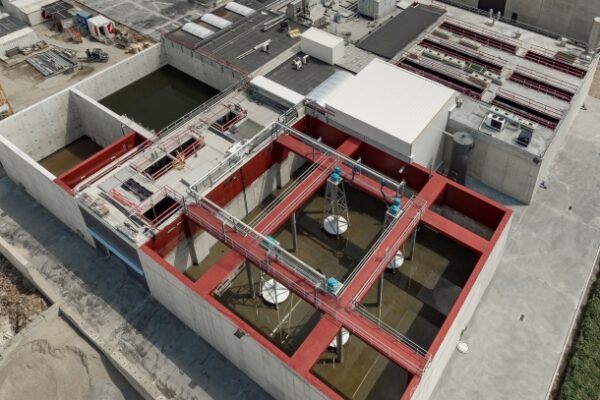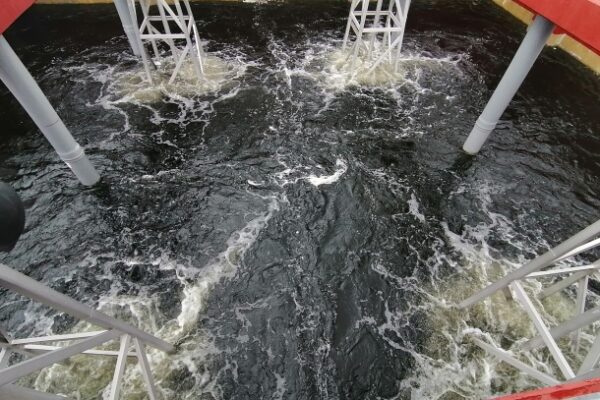Challenging water treatment project for a potato processing plant
Aviko is building a completely new production facility for deep-frozen French fries and potato flakes in Poperinge. Once in full operation, it will process 175,000 tons of potatoes per year, which equates to a waste water flow of more than 2,500 m3/day. Veolia Water Technologies was chosen to construct the treatment plant so that the heavily polluted water – the chemical oxygen demand reaches 26 tons per day – can be discharged and reused.
The wastewater from the potato processing industry has traditionally been difficult to manage. With a high starch content, non-negligible levels of fat from the fryer and a generally high concentration of nitrogen and phosphorus, wastewater treatment poses a complex problem. But the very strict discharge standards in Poperinge, with a maximum of 1 mg total phosphorus, complicate matters made, as well as Aviko’s desire to realize as compact a system as possible. “The ambitions for this project were very high,” confirms Michel Danau, Sales Manager at Veolia. “Thanks to our shared expertise, we have achieved the goals.”
Compact but powerful
An area of 55 x 60 m. That was all Veolia had to ensure the treatment of the waste water. But the first important measure is implemented in advance, according to Sam Varga, project manager at Veolia. The waste water, which is rich in starch and fat, is kept separate during the entire production process. The main flow, namely the starchy water, goes straight to the treatment plant, where we separate the starch in a lamella separator and then separate the water, sludge and biogas using a UASB. Only then is the much smaller amount of fatty waste water, which has already undergone flotation treatment during production, fed into the main stream. In this way we avoid fats interfering with the anaerobic process.” The common effluents are treated according to a biological process based on nitrification/denitrification followed by ultrafiltration. What is special, however, is that both cases involve a double procedure. “We not only rely on pre- and post-nitrification/denitrification, but also supply two MBR (membrane bioreactors) that are connected in series. This is the only way to meet the stringent nitrogen and phosphorus requirements at such high flow rates.
The focus is on recycling
The extensive purification and removal of phosphorus also paves the way for water to be reused in the production process. For this purpose, an RO unit was installed after the MBR. “In a first step, we can only feed back a limited part of the wastewater, but later we hope to increase this proportion even further,” says Cor Koole, project manager at Aviko. “At the moment we are still reaching the limits of the wastewater standards with the reverse osmosis concentrate.” However, Aviko and Veolia are considering other options for further using the various wastewaters. “In consultation with the city of Poperinge, we have set up a buffer tank where we collect rainwater and our waste water. These waters can be used by local sports associations and some farmers to irrigate pitches and fields. And of course we also produce biogas in the biogas treatment plant, which we can use to supply our boilers.”
For people and the environment
To ensure the ergonomics of the operators and the comfort of local residents, the company has also invested heavily in ventilation and insulation. “All sludge tanks are installed indoors and all rooms are equipped with ventilation, extraction and exhaust air treatment,” says Danau. “Rooms that are more prone to odor nuisance are delimited with airlocks and particular attention has been paid to sound insulation in the pump rooms. These aspects are often neglected, but the advantage of a new plant is that they can be integrated as early as the design phase.”
Text (German original) written by: Veolia Water Technologies Belgium





